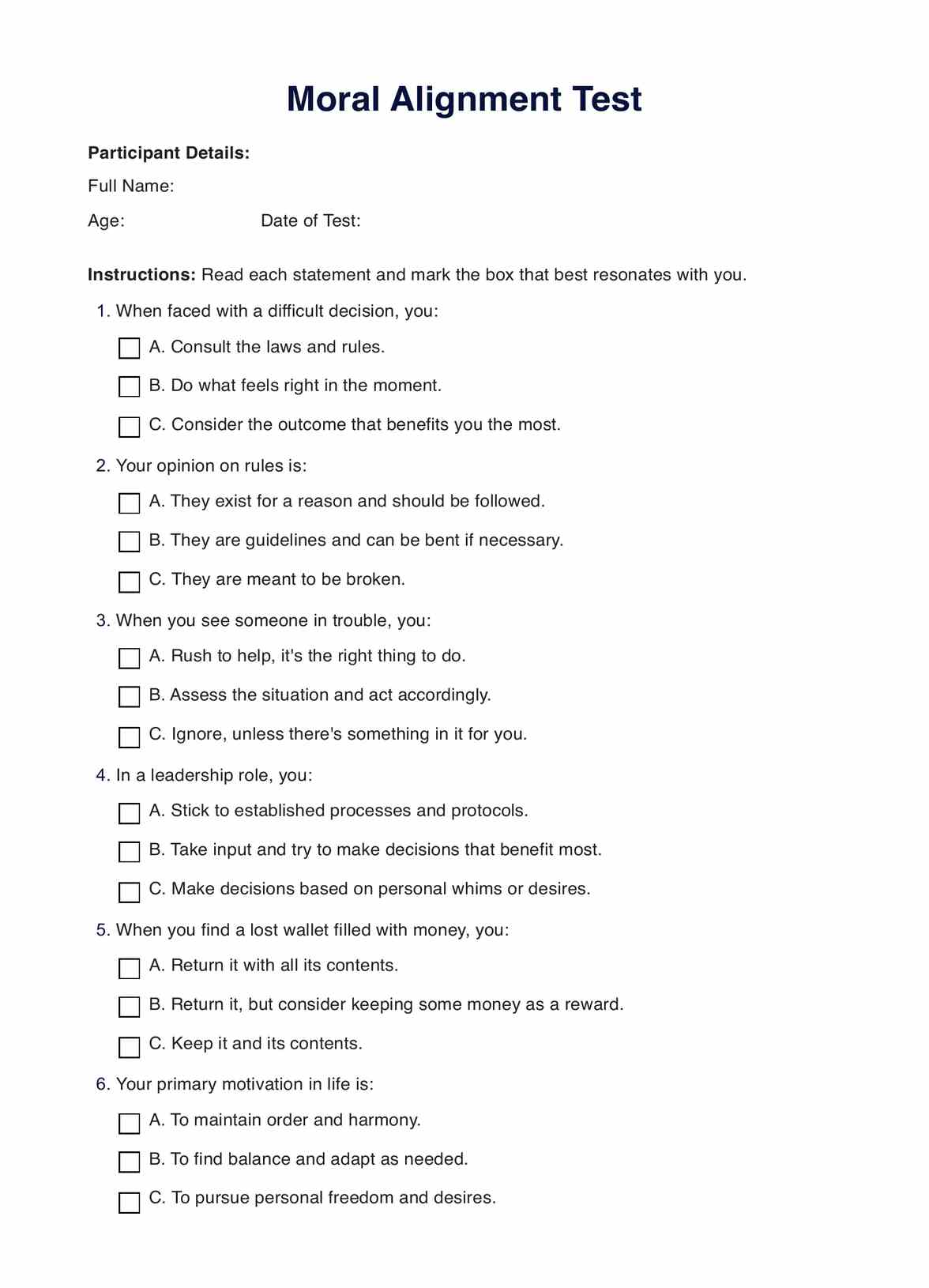Moral alignment reflects how an individual navigate the complexities of right and wrong in the world, encompassing their actions and decisions based on personal beliefs and values. By understanding moral alignment, individuals gain power over their choices and actions, allowing them to become a free spirit who prioritize well-being over merely maintaining the status quo.

Moral Alignment
Uncover your ethical stance with the Moral Alignment Test, a tool rooted in Dungeons & Dragons. Gauge your moral compass and join the discussion today.
Moral Alignment Template
Commonly asked questions
While the concept of moral alignment is primarily used in role-playing games, individuals can draw parallels between their alignment and their real-life ethical outlook. However, it's important to note that moral alignment is not an all-encompassing measure of a person's character or decision-making process.
Moral Alignment Tests are used whenever an individual or group wants to explore moral and ethical perspectives in a structured way.
EHR and practice management software
Get started for free
*No credit card required
Free
$0/usd
Unlimited clients
Telehealth
1GB of storage
Client portal text
Automated billing and online payments











